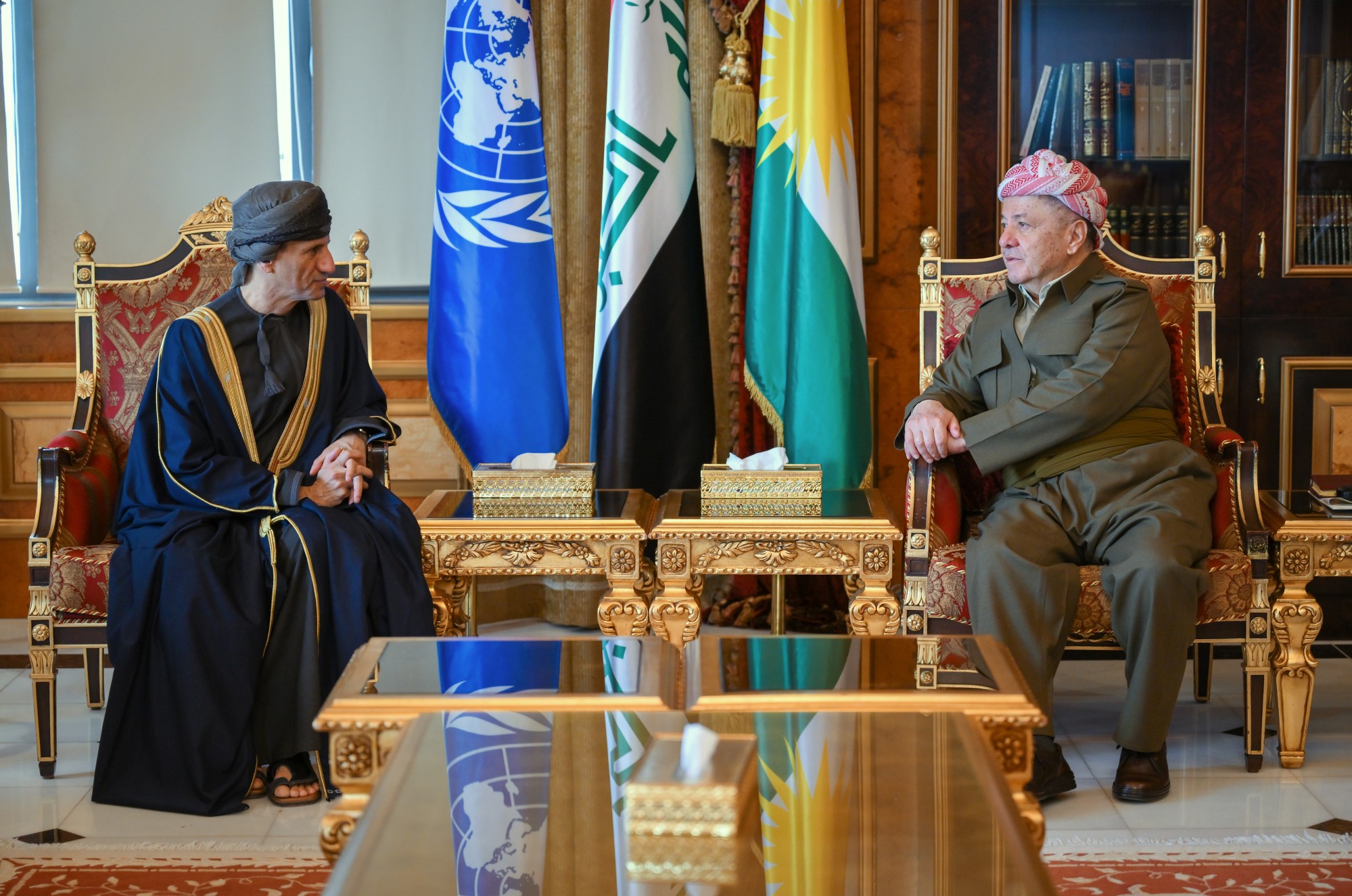Kurdistan Chronicle, the Kurdistan Regional Government (KRG), and the Kurdistan Film Commission organized an event on May 21 honoring the archeologists, government officials, and Kurdish excavators that helped find the remains of Neanderthals in Shanidar Cave.
The event was attended by senior Kurdish officials, including KRG Minister of Interior Rebar Ahmed Khalid, Mullah Mustafa Barzani (Babo), supervisor of the Soran Independent Administration Halgurd Sheikh Najib, and KRG Minister of Municipalities and Tourism Sasan Awni.
ێوارەی ٢٠ی ئایاری ٢٠٢٤، لە دەڤەری بارزان لە ئەشکەوتی شانەدەر بە ئامادەبوونی جەنابی مەلا مستەفا بارزانی و وەزیرە بەڕێزەکانی حکوومەت و سەرپەرشتیاری ئیدارەی سەربەخۆی سۆران و تیمی زانکۆی کامبریجی بەریتانی و فەرمانگەکانی شوێنەوار و بەرپرسانی حیزبی و حکومی دەڤەرەکە، بەشداربووین لە… pic.twitter.com/OzZxmp3Ox2
— Sasan Awni ساسان عەونی (@SasanAwni) May 20, 2024
On behalf of the KRG and the Soran Independent Administration, Sheikh Najib at the event expressed his “gratitude to everyone who made this huge leap forward in the field of archaeology possible.”
He also thanked all the KRG institutions and officials who facilitated the decades-long research in Shanidar Cave, including KRG Prime Minister Masrour Barzani.
“While Shanidar will remain as one of the most important archeology sites, we must bear in mind that Kurdistan boasts thousands of other locations that connect us to our ancient past,” Sheikh Najib said.
“We at the Soran Independent Administration proudly announce that our doors are open to the academic community from around the world. The KRG is committed to providing every possible facilitation.”
U.S. archaeologist Ralph Solecki led teams from Columbia University in the 1950s to excavate the area and discovered 10 Neanderthal skeletons in Shanidar Cave. The team’s findings from pollen analysis suggest that one individual had been buried under a blanket of flowers.
A ceremony took place in the #shandar_cave with LTG #Sihad_Barzani, senior officials from the #KRG , and several international and local archaeologists in attendance, to recognize the scientific achievements in discovering the skull of a #Neanderthal, known as (#Shanadar_Zet), pic.twitter.com/964hKES2OT
— 1st Supporting Forces Command (SFC1) (@forces_command) May 20, 2024
“The first discovery dates back to 1952, with the body appearing remarkably preserved despite the individual supposedly being just four years old. Two years later, in 1954, we stumbled upon the remains of a woman,” Abdullah Barzani, one of the surviving members of Solecki’s original team, told Kurdistan Chronicle.
“Medical examinations revealed she had succumbed to an illness at the age of 37 years. Alongside these discoveries, we recovered various artifacts – likely once cherished possessions of these individuals – such as pearls, which remarkably endured the test of time underground."
Read More: Netflix Documentary to Focus on Shanidar Cave
Shanidar Cave gained more international attention after Netflix streamed the documentary Secrets of the Neanderthals,produced by the BBC, on May 2.
“My family and I are very happy to learn about the important new work being done at Shanidar and the renewed attention paid to Neanderthals and the cave site,” John Solecki, Ralph Solecki's son, told Kurdistan Chronicle.
Sheikh Najib told Kurdistan Chronicle that the documentary makes the research more accessible, and more “valuable and more understandable for ordinary people.”
Sheikh Najib added that they have a plan to open a museum in the future. “We are expecting a lot of visitors.”
At the panel organized by Kurdistan Chronicle, director of the archeology department of Soran Abdulwahhab Sulaiman said that the documentary introduced the Kurdistan Region to at least 2 billion people. “I am sure if Kurdistan pays more attention to archeology we will attract a lot of people around the globe.”
Director of Erbil Antiquities Dr. Nader B. Mohammed told Kurdistan Chronicle that the KRG hopes that Shanidar Cave will attract more visitors in the future.
“The significance of ancient sites worldwide, particularly for international tourists, lies in their appeal for historical, cultural, and artistic exploration. In Kurdistan, it’s imperative to cultivate our historical, cultural, and artistic identity to draw more visitors.”
“Government officials and institutions must prioritize these aspects for investment. Beyond amplifying our presence globally, these sites can also serve as revenue streams and contribute positively to humanity, as they belong not to one nation but to all.”
“Apart from the renowned Shanidar site, our research indicates the presence of nearly 2,000 historical caves stretching from the Syrian border to Erbil. The potential for further discoveries, not limited to Shanidar, is promising. However, Shanidar holds particular significance, potentially altering our understanding of human history. Hence, prioritizing its preservation and enhancing visitor services is crucial to its continued significance.”
He said also they have created plans to safeguard Shanidar from graffiti. “Visitors must be educated on proper conduct, prohibiting actions like painting or touching artifacts.”
Additionally, he said attention garnered by productions from platforms like Netflix and the BBC underscores the site’s importance and the need to preserve it.
Moreover, the KRG will develop plans for a visitor center, with “high-quality replicas of the original designs outside the cave to mitigate risks while allowing visitors to appreciate the site’s historical significance.”
The BBC documentary features Dr. Emma Pomeroy, a palaeoanthropologist from the University of Cambridge’s Department of Archaeology, and Graeme Barker, Fellow at St John’s College and director of the new excavations at Shanidar Cave, who both spoke at the event.
“Like every student of prehistoric archaeology, anywhere in the world, I learned about Shanidar Cave as an undergraduate, because of the amazing discoveries there by Ralph Solekci in his 1951-1960 excavations,” Barker said at the event.
“The Neanderthal crippled as a boy died as an adult, so he must have been looked after by his companions. The theory is that one of the others had been buried on a carpet of flowers. These ideas to me as a student represented a totally new challenge to the orthodox view of Neanderthals as unfeeling, unthinking beings totally different from Homo sapiens.”
“The Shanidar Cave was all the more important because the Neanderthal layers in the lower part of this 14-meter trench that Solecki excavated were followed by layers with evidence for Homo sapiens. The radiocarbon dates that Solecki obtained very early in the development of the method indicated that the last Neanderthals were using the cave about 40,000 to 45,000 years ago.”
“That’s around when Neanderthals disappeared all over the world.”
He underlined that Shanidar is one of the best places in the world to study “why Neanderthals disappeared, after being so successful for so long.
At the end of the event, Babo gave an award to the archeologists and people who contributed to the excavation of Shanidar Cave.

